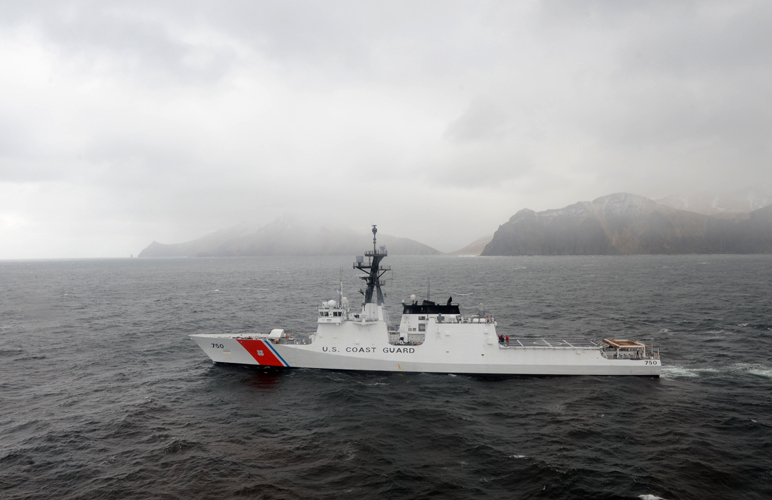US budget signals more spending for long-term Arctic strategies
The U.S. Coast Guard's Arctic Program Office could coordinate Arctic strategies across federal agencies, from the Navy to the Department of Interior.

Last month’s federal budget signals that United States may soon be willing to spend more money on programs in the Arctic.
The omnibus spending bill signed into law in February authorized funding for a new heavy icebreaker.
But that wasn’t the only Arctic directive. The bill also asked the U.S. Coast Guard to report on the resources needed for its Arctic program office — a sign that the federal government is thinking about how to coordinate long-term strategies in the Arctic, observers say.
The Senate 2019 Department of Homeland Security Appropriations Act, where this directive originated, highlighted the office’s work supporting the completion of the Bering Strait Port Access Route Study in 2016, which resulted in the first IMO-approved measure for vessel traffic and navigation safety.
In October 2018, the Coast Guard also delivered a report to Congress on vessel traffic communications in western Alaska along the coast. In the report, the Coast Guard proposed a plan to provide communications throughout that region “to improve waterway safety and to mitigate close calls, collisions, and other dangerous interactions between large ships and subsistence-hunter vessels,” Barry Lane, a spokesperson for the Coast Guard, told ArcticToday.
The Appropriations Committee is now asking for a report from the Coast Guard on what resources the office needs to continue such work.
The Coast Guard first established the Arctic Policy Office in 2015. The office is located at Coast Guard headquarters within the Marine Transportation Systems Directorate, which is also responsible for domestic and polar icebreaking policy.
The Arctic Policy Office develops and coordinates the Coast Guard’s Arctic strategy and implementation plans, including outreach and engagement on international, federal, state, and local levels. It also aligns Arctic activities with national security interests, Lane said.
“When it comes to an Arctic strategy, we have been somewhat limited in our overarching Arctic policy, and thus with our Arctic strategy,” Alaska Sen. Lisa Murkowski, a Republican, told ArcticToday. Part of the challenge, she said, is that Arctic planning and implementation is dispersed across several agencies without much coordination.
“It seems like almost every department, every agency, has one little piece of Arctic,” Murkowski said. “And because everybody has a piece, there’s nobody that is essentially in charge. There’s no point person, there’s no one office.”
The Coast Guard is the primary military agency operating in the Arctic, and this office could become the primary coordinator for Arctic strategies from the U.S. Navy, Department of Interior and other government agencies.
“Having an Arctic program office within the Coast Guard to help facilitate the efforts moving forward,” Murkowski said.
Murkowski also plans to reintroduce the Arctic Policy Act to the Senate this year. The legislation would permanently establish an Arctic Executive Steering Committee, an Arctic Advisory Committee composed of members from Alaska’s eight Arctic regions, and regional tribal advisory groups.
These committees would exist separately from the Coast Guard’s Arctic program office, but they would work together to establish and implement Arctic strategies across the federal government.
The omnibus spending bill, then, is an opportunity for the Coast Guard to report on what it would need to do this — a request, Murkowski said, to “tell us what it is you need to basically stand this up.”